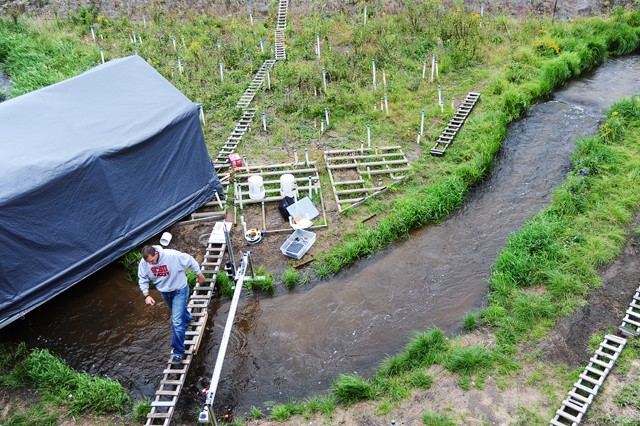The St. Anthony Falls Laboratory sits awkwardly in the historic St. Anthony Falls district, an enduring symbol of the Great Depression.
Since the lab was built in the 1930s, the land surrounding it has transformed âÄî from flour and textile mills feeding off the river to a chic restaurant and office district, said Ben Erickson, a scientist in the lab for more than two decades.
The lab hasnâÄôt changed much in those 70 years, with the exception of a few small additions. But over the next three years, the lab will undergo a $16 million renovation that will bring SAFL up to date with many of todayâÄôs standards.
Of the $16 million received, $7.1 million will come from a National Science Foundation grant funded by the federal Academic Research Infrastructure program, which awards grant money to
research facilities in need of repair.
The federal money will only allow renovations in areas of research. But the areas that are in most need of renovations are not covered by the NSF grant, according to Fotis Sotiropoulos, director of the lab.
“They are very specific on what they will pay for,” Chuck Koncker, project manager for the University of MinnesotaâÄôs Capital Planning and Project Management, said.
“This is a 70-year-old building and these are 70-year-old wiring[s],” Erickson said. “If you blow a circuit up, the circuit board might be two floors down all the way across the building.”
An additional $8.7 million from the state will be used to improve the infrastructure of the building, including incorporating a better ventilation system.
“It will be comfortable in your office âÄî then you step out [into the hallway] and it is 90 degrees with 80 percent humidity,” Erickson said.
The state money comes from the Higher Education Asset Preservation and Replacement fund and will be used to cover any renovation costs that the NSF grant cannot cover, including a new elevator.
The only elevator in the six-story building was forced out of commission by the state six years ago.
“Graduate students have come and gone and have never seen a working elevator,” Erickson said.
During rain showers, the lab is known to leak water through cracks in the wall. The walls in the lower floors of the lab are not concrete either but rather natural limestone, according to Erickson, who also gives tours of the lab.
Enforced by 14 inches of concrete everywhere else, some of the building is actually built below the river level.
The rusted pipes and strange ventilation system donâÄôt seem to deter researchers, who travel from around the world to work at the lab, where they conduct research ranging from growing algae for biofuels to designing a numerical model of heart valves. ItâÄôs also is the worldâÄôs only fluid-mechanics laboratory with its own natural waterfall.
The lab has its own channel that feeds river water through the building, and researchers have relied on the free river water to conduct research for many decades.
“ItâÄôs a lot easier to bring the river to the lab as opposed to bringing the lab to the river,” Erickson said. “It is really a one-of-a-kind facility.”
Sotiropoulos is looking forward to the renovations in the lab but said one of the challenges will be minimizing the impact the construction will have on research. This problem will be addressed in following months as the lab works to prioritize the individual renovations and work around any conflicting issues with research.
More than 120 people work at the lab at any given time, Erickson said. Twelve professors, about 50 graduate students and a handful of undergraduate students and visiting professors use the building.








